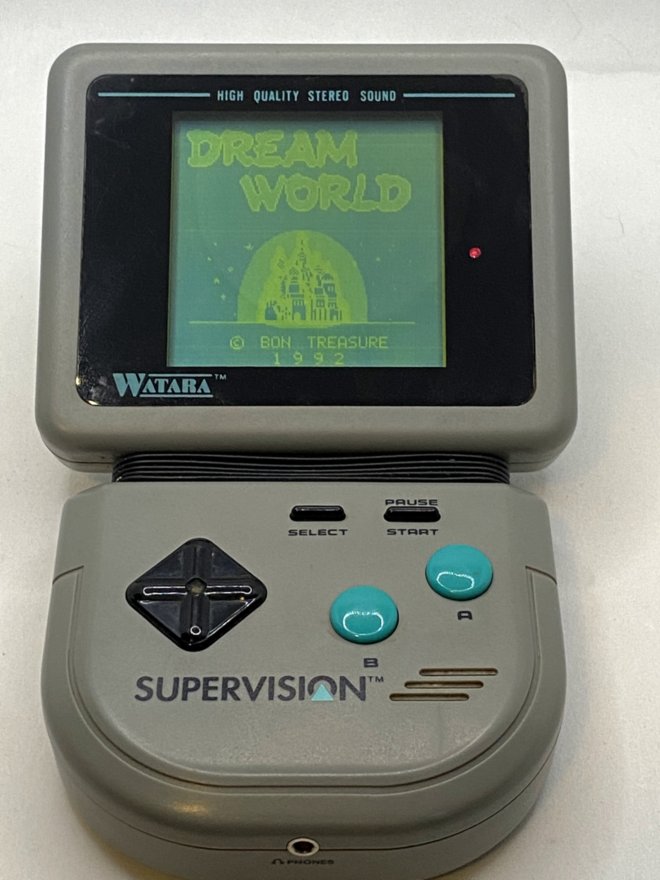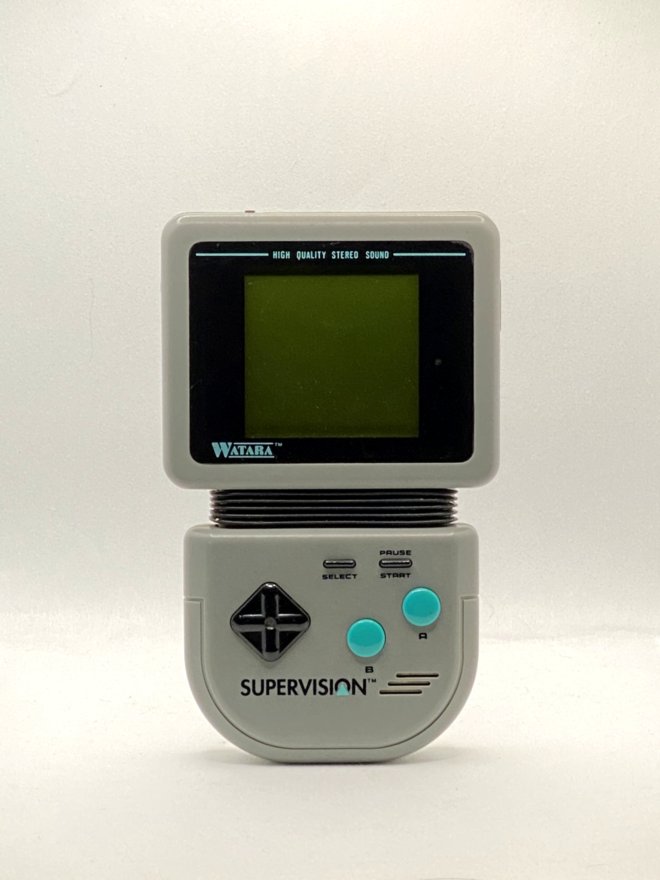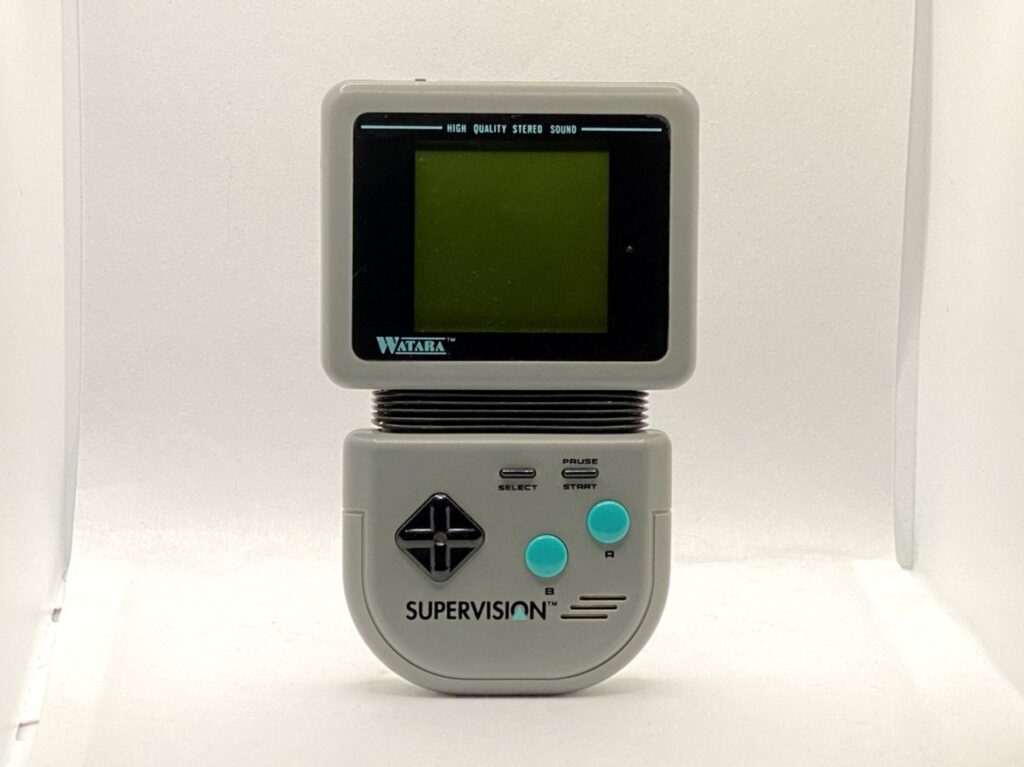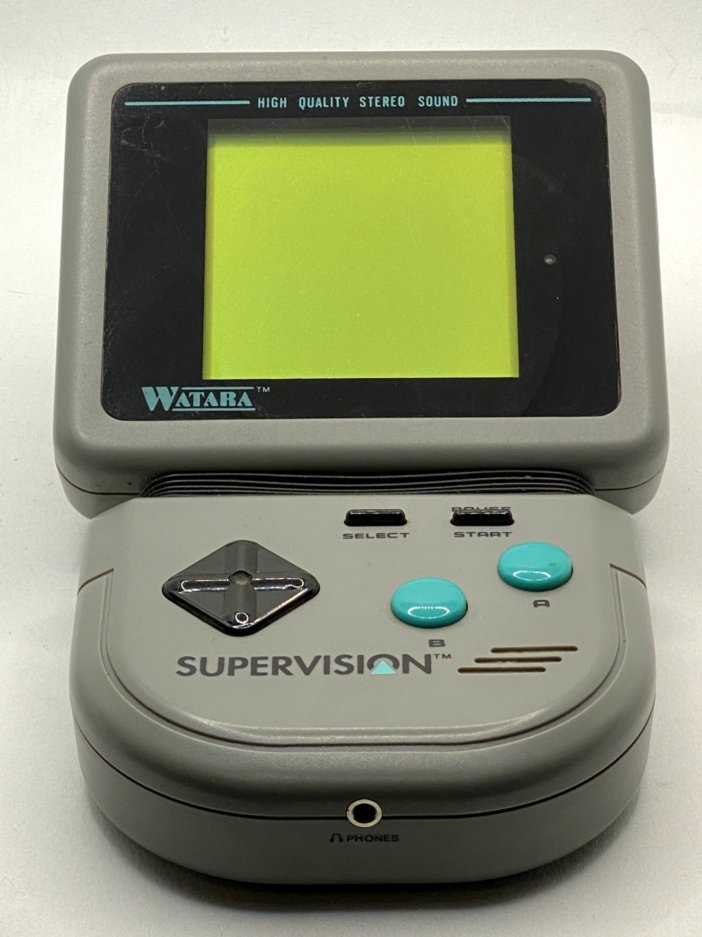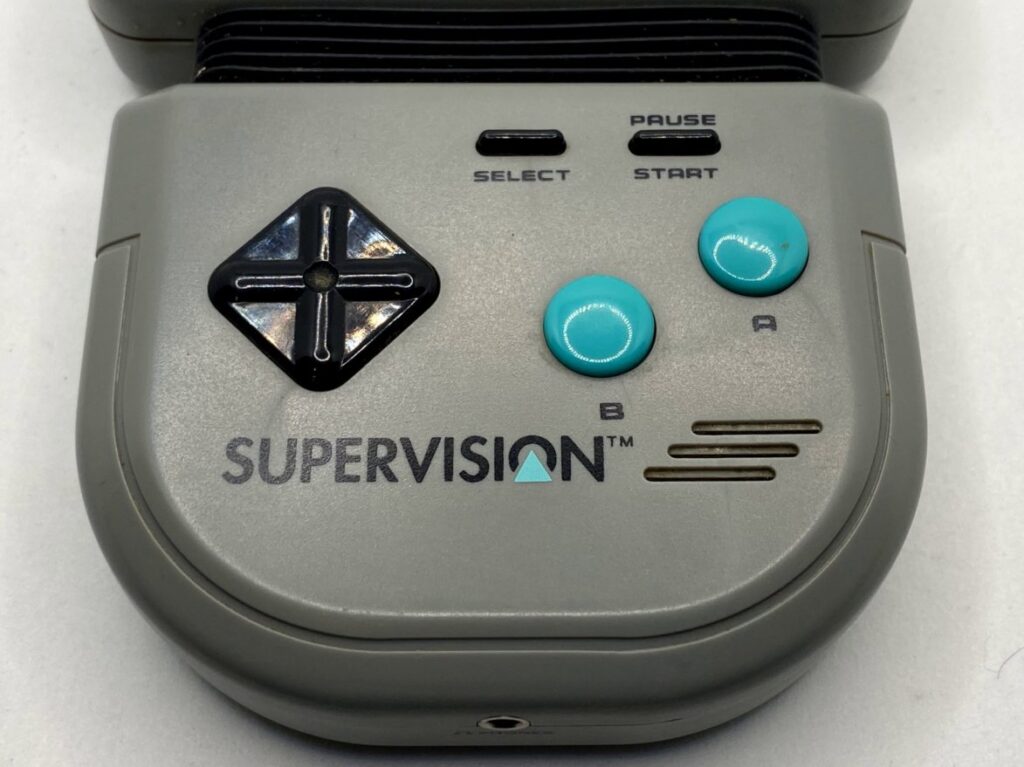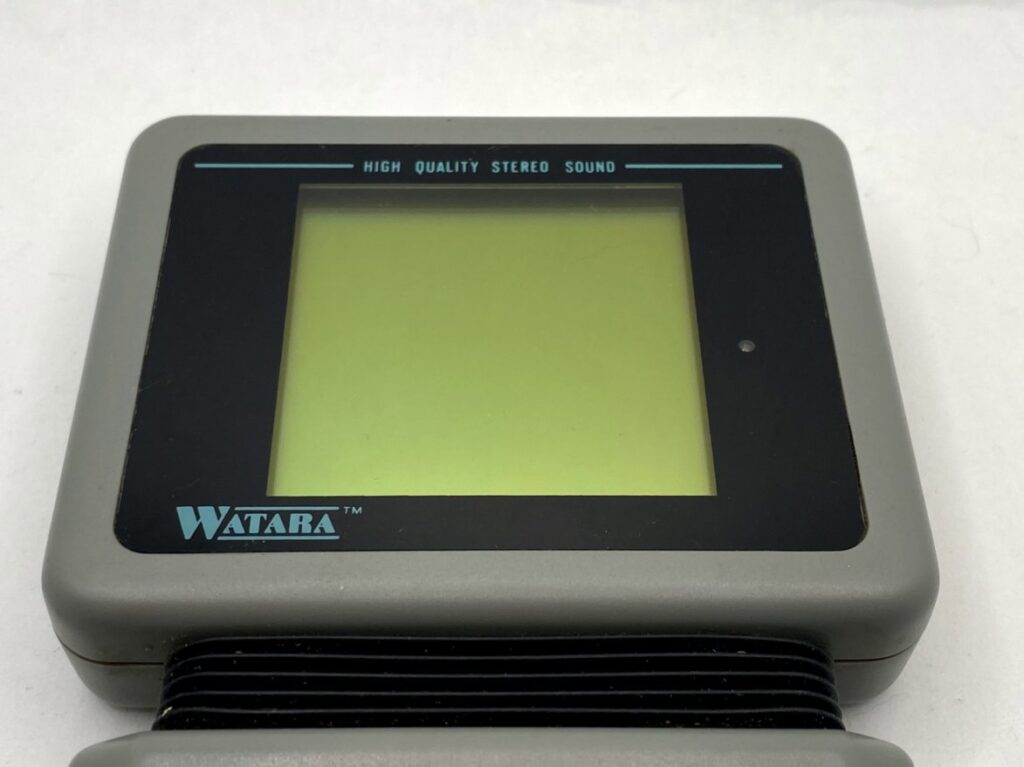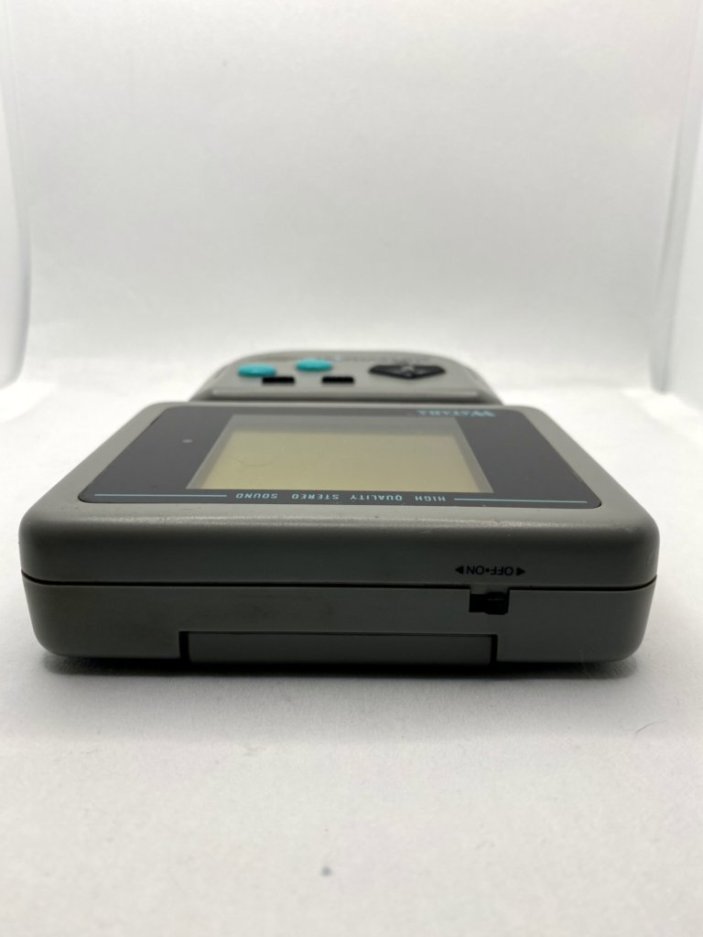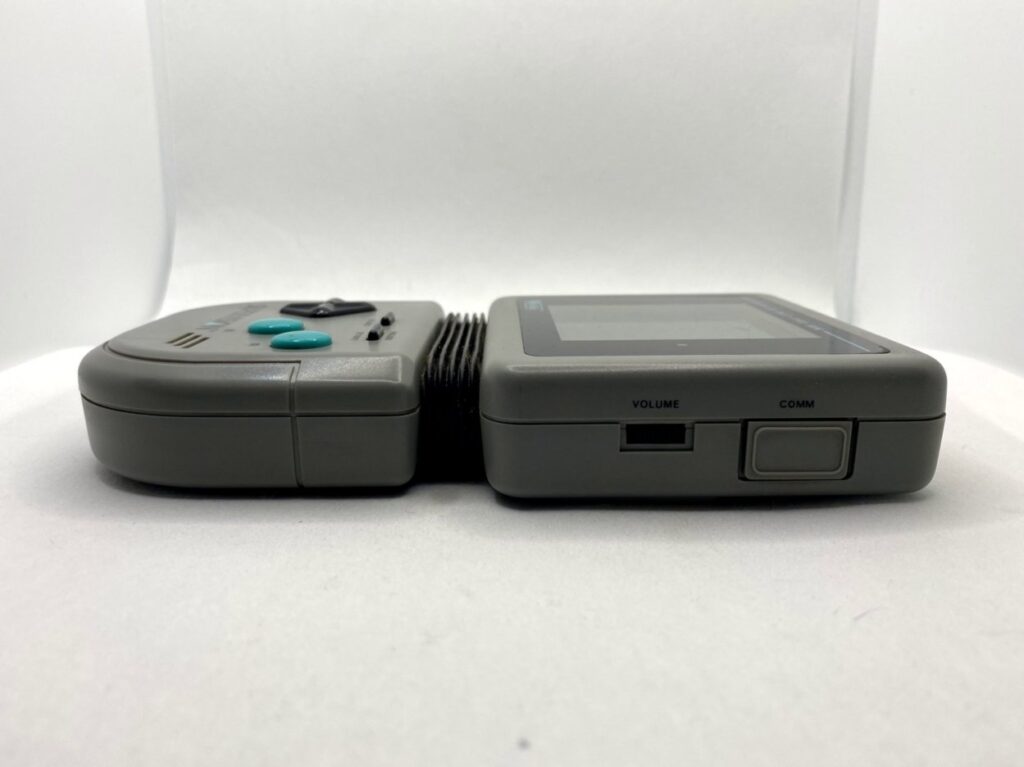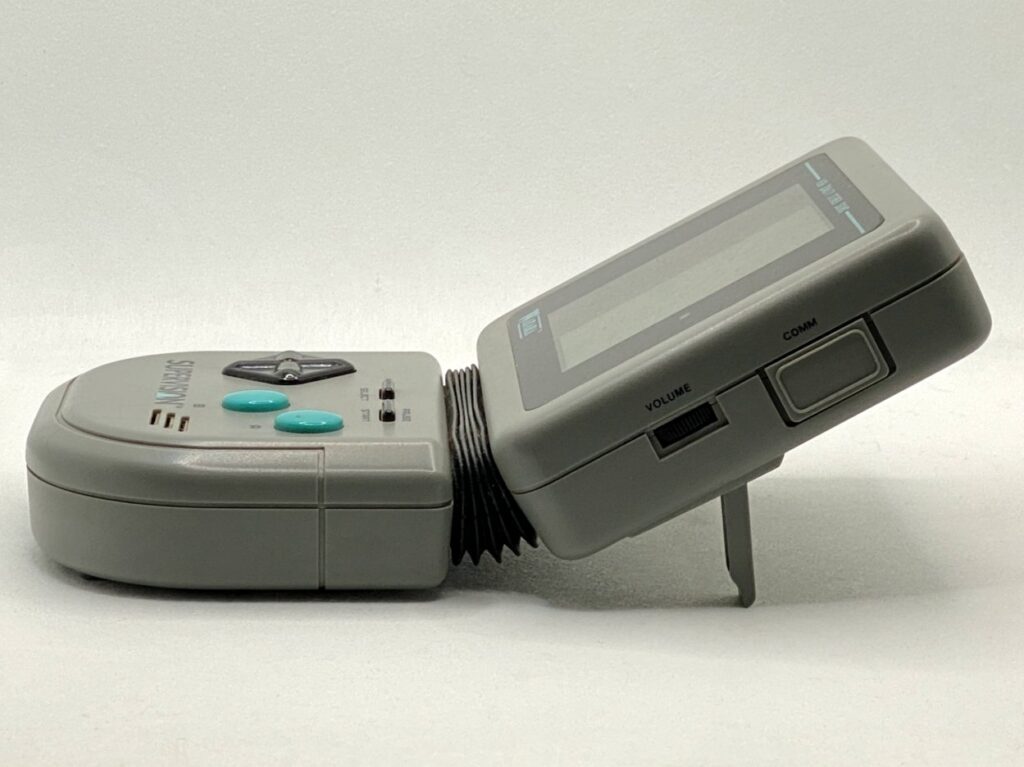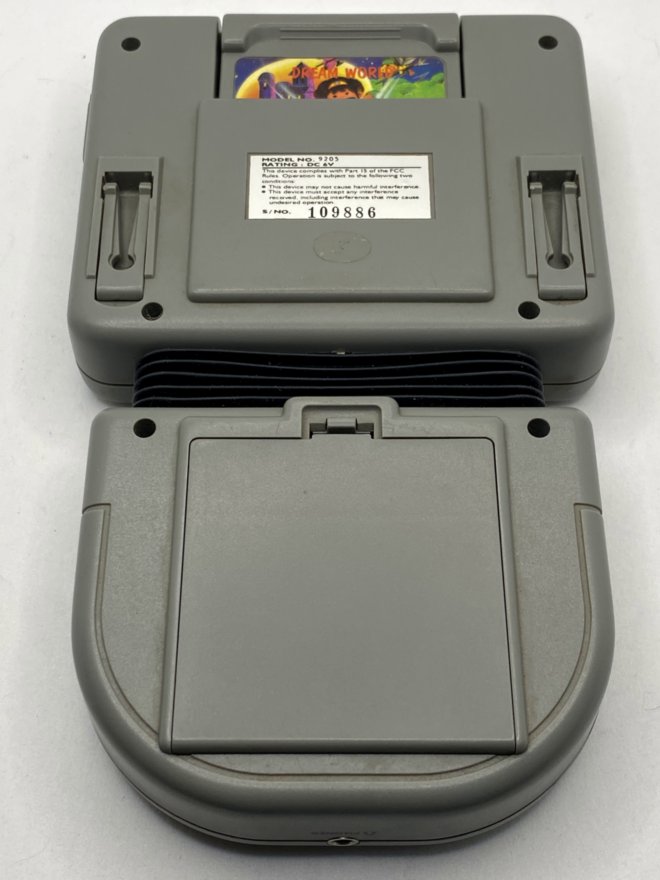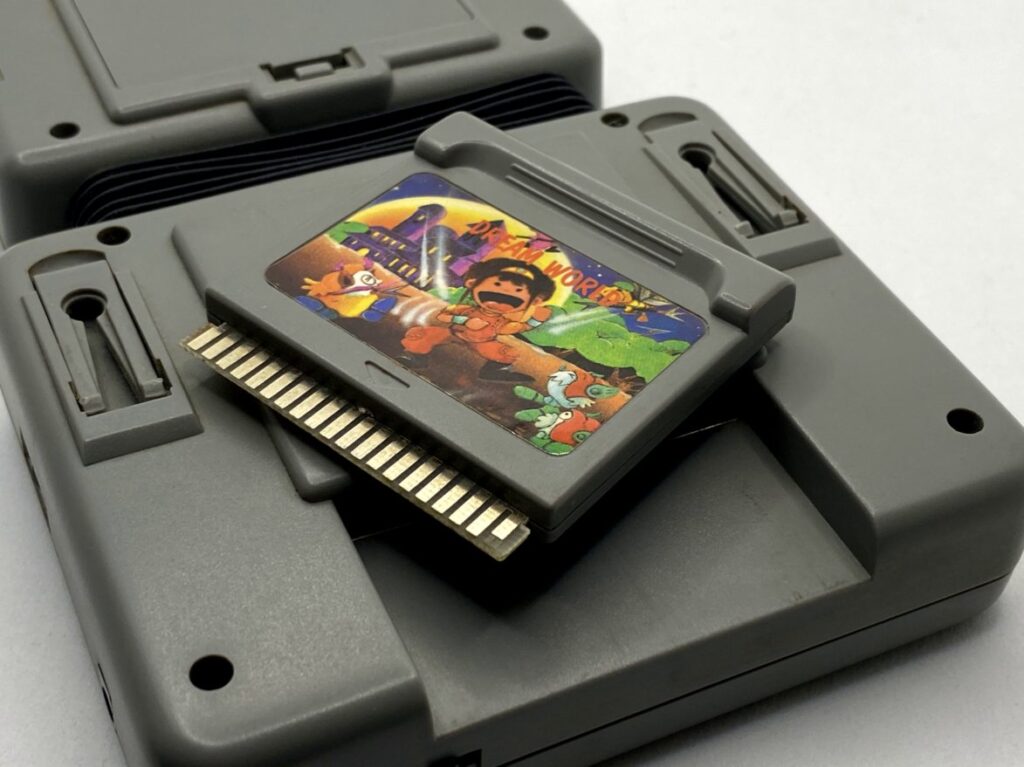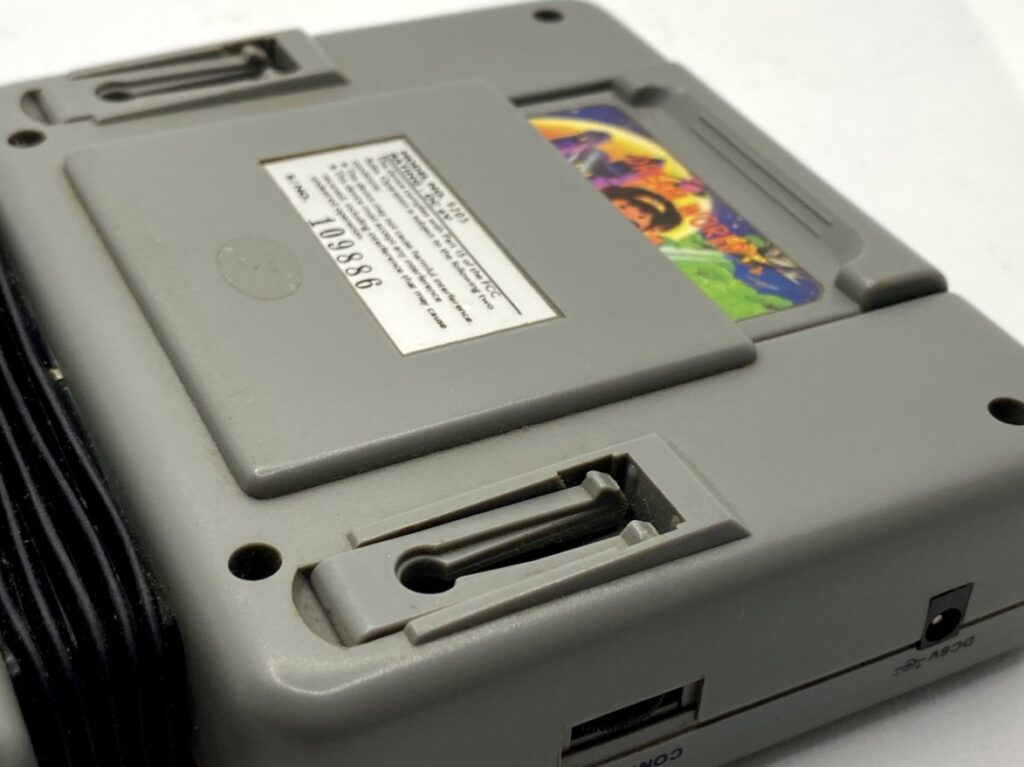The Tilt-Screen Handheld That Game Boy Killed
October 18, 2020The late ’80s and early ’90s saw a boom of handheld consoles; unlike the early single-game systems first introduced in the ’70s, these game systems gave players a chance to buy one console, and then pick up small cartridges to play an ever-growing library of games.
The first major handheld console came, of course, from Nintendo.
The Game Boy arrived in 1989 and essentially reinvented what a handheld was meant to be. The tremendous success of that chunky little system spurred several competitors.
In 1991, Sega released its battery-hungry Game Gear, a system still beloved by fans, despite its many flaws.
But in 1992, a much less successful system took to the market, indirectly taking on the Game Gear, but really aimed to appeal to the Game Boy audience. What a mistake.
The Watara Supervision (also known as the QuickShot Supervision, the Travell Mate, the Electrolab, the Hipervision, and the Tiger Boy) is a chunky monochrome handheld that cost just $50, a cost cut that made it seem like a deal compared to the $90 Game Boy at the time.
Like the Game Boy, it ran games on an 8-bit processor, had a slightly better resolution at 160 by 160 pixels, and delivered “four shades of gray” gaming. The system includes a two-player link communications port, and — seemingly a big plus — the ability to connect the system to a television, where it would run games in four colors.
The original Supervision also has a fun tilting screen and two little foldable supports in the back that allowed for a form of tabletop gaming.
While the system does have some issues with a less-than-crisp screen, the biggest downfall was that it didn’t have the same robust, eclectic, frankly, amazing library that the Game Boy boasted.
The system had about 70 games, most of which were made in Taiwan or Hong Kong and simply didn’t have the design or draw of titles featuring the likes of Mario and Zelda.
While there was a Game Boy-shaped Supervision released as well, one can’t help but wonder if the odd, goose-necked, bulky design of the system also led to some of its market failure.
While the Watara Supervision didn’t survive much past its launch, it remains an interesting sidenote in handheld gaming history.
Love retro handhelds? Well then, have I got a bunch of stories, videos, and pictures for you.

